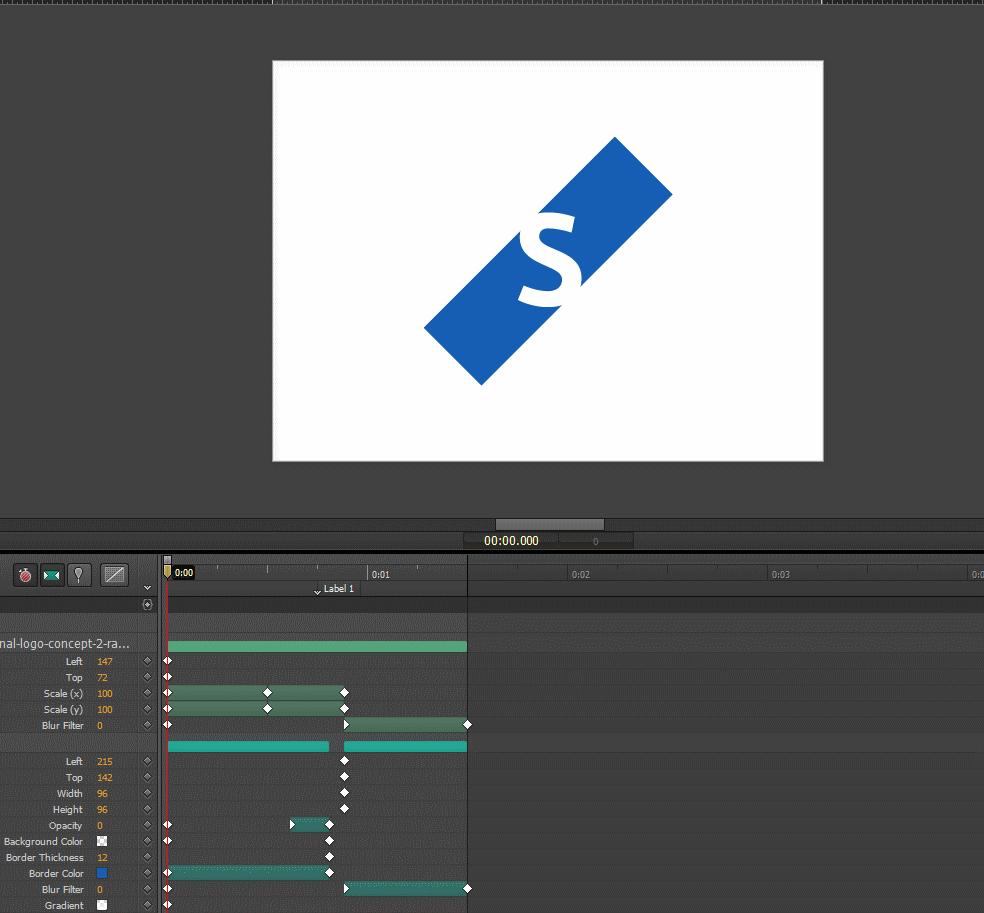I decided to play around a bit with animating SVG content. There are actually multiple ways to animate SVG: CSS (transition, transform, @keyframes), Javascript, or Synchronized Multimedia Integration Language (SMIL). Where possible, I tend to prefer Javascript, as you have far more flexibility compared to markup languages; however, out of curiosity, I did try my hand at SMIL as well.
Method 1: Javascript
Here’s the SVG markup for the object being animated.
<svg version="1.1" x="0px" y="0px" width="74px" height="74px" viewBox="-1.751 -1.751 74 74" enable-background="new -1.751 -1.751 74 74" xml:space="preserve">
<g id="circularMarker" transform="rotate(0 35.163 35.521)">
<path fill="#27AAE1" d="M46.336,7.908c2.174,0.678,4.236,1.538,6.199,2.54V3.69c-1.417-0.607-2.875-1.146-4.377-1.616
C37.794-1.161,27.147-0.491,17.793,3.242v6.663C26.41,5.825,36.518,4.843,46.336,7.908z"/>
<path fill="#27AAE1" d="M62.423,46.338c-0.679,2.173-1.537,4.236-2.538,6.199h6.757c0.605-1.417,1.147-2.877,1.615-4.382
c3.235-10.364,2.564-21.006-1.167-30.362h-6.664C64.505,26.41,65.489,36.52,62.423,46.338z"/>
<path fill="#27AAE1" d="M23.992,62.42c-2.171-0.678-4.236-1.536-6.199-2.538v6.759c1.418,0.604,2.877,1.146,4.381,1.616
c10.364,3.233,21.009,2.564,30.362-1.17v-6.664C43.921,64.505,33.81,65.488,23.992,62.42z"/>
<path fill="#27AAE1" d="M7.909,23.994c0.678-2.174,1.538-4.237,2.538-6.2H3.691c-0.606,1.416-1.147,2.878-1.617,4.38
c-3.234,10.364-2.564,21.012,1.168,30.365h6.664C5.825,43.921,4.843,33.813,7.909,23.994z"/>
<circle fill="#00AEEF" cx="35.163" cy="35.521" r="11.331"/>
</g>
</svg>
To animate, the transform attribute on the #circularMarker group element is updated every frame to do a simple rotation at a rate of 0.275 deg/ms. You can see the result in the iframe below.
Here’s the Javascript code that makes it happen:
<script src="jquery-1.8.2.min.js" type="text/javascript"></script>
<script type="text/javascript">
// setup window.requestAnimationFrame
(function ()
{
var requestAnimationFrame = window.requestAnimationFrame || window.mozRequestAnimationFrame ||
window.webkitRequestAnimationFrame || window.msRequestAnimationFrame;
window.requestAnimationFrame = requestAnimationFrame;
})();
// set initial frame time (in milliseconds)
var ft1 = new Date().getTime();
// set initial angle (in degrees)
var angleDeg = 0;
// function to rotate circle
function rotateCircularMarker()
{
var ft = new Date().getTime();
var ftDelta = ft - ft1;
ft1 = ft;
// rotate at a rate of 0.275 deg/ms
angleDeg += ftDelta * 0.275;
if (angleDeg >= 360) {
// full circle!, reset angleDeg
angleDeg = 0;
}
// transform the #circularMarker group
// Note: the rotation is about the center of the circle element (35.163, 35.521)
$('#circularMarker').attr('transform', 'rotate(' + angleDeg + ' 35.163 35.521)');
// call requestAnimationFrame to continue animating
requestAnimationFrame(rotateCircularMarker);
}
$(document).ready(function ()
{
rotateCircularMarker();
});
</script>
Note that window.requestAnimationFrame is used, so a modern browser is required. For older browsers it is possible to use window.setInterval as a fallback.
Method 2: SMIL
With SMIL, the SVG code remains the same, with the exception of an animateTransform tag within the #circularMarker group element.
<animateTransform attributeName="transform" attributeType="XML" type="rotate" from="0 35.163 35.521" to="360 35.163 35.521" begin="0s" dur="1.336996s" repeatCount="indefinite"/>
The attributes of animateTransform describe the animation, mainly type, from, to, begin, dur, and repeatCount.
Obviously SMIL yields less code and removes all Javascript dependencies, but it does come at the cost of losing flexibility (as you can only perform transformations and timing operations supported by SMIL attributes) and having to learn yet another markup language.







